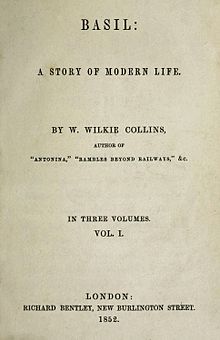Plot summary
Basil, son of a father who values the family pedigree and who would not let him marry below his station, falls in love at first sight with a girl he sees on a bus. He follows her and discovers she is Margaret Sherwin, only daughter of a linen draper. He persuades her father to let him marry her secretly. He agrees on the condition, that, as his daughter is only seventeen, they live apart for the first year. At first the secret works, but then the mysterious Mannion, whose emotions cannot be read in his face, returns from abroad. On the last night of the year Basil follows Margaret and Mannion and discovers them in flagrante delicto . Basil attacks Mannion in the street and tries to murder him, but succeeds only in mutilating his face by pushing it into the fresh tarmacadam in the road. Mannion survives, recovers and swears revenge, and it is revealed that Basil's father indirectly caused Mannion's father to be hanged for forgery.
Basil repudiates Margaret, but Sherwin threatens him with exposure unless he holds to his marriage. Basil confesses to his father, who disowns him, but his sister Clara stands by him. Basil's brother Ralph undertakes to buy Sherwin off, but meanwhile Margaret flees to Mannion, thereby acknowledging her guilt. Visiting Mannion in hospital, she catches typhus and dies. Basil, having been put on her track by Ralph, visits her on her deathbed.
Basil flees from Mannion to Cornwall. The dénouement is worthy of Conan Doyle, set among whirlpools and cliffs near Lands End.
Themes and criticism
In her introduction (Oxford World's Classics Edition), Dorothy Goldman applies psychoanalytic theories to argue that Basil and Mannion, Margaret and Clara, are each like opposite halves of the same person. A further doublet is between the active Ralph and the passive Basil, as the former notes in his dialogue. Mrs Sherwin, Margaret's mother, is apparently feeble-minded and as such is the precursor of Sarah Leeson (The Dead Secret), Mrs Wragge (No Name) and other of Collins' deranged woman characters - though she is astute enough to suspect Margaret and Mannion's guilty secret.
One criticism of the book's plot is that it is highly coincidental that Mannion's father lost his life as a consequence of actions set in motion by Basil's father. The fact that the very woman Basil randomly follows is so closely connected to Basil, via Mannion, despite being a total stranger, can be considered to be a plot flaw.

Lady Audley's Secret is a sensation novel by Mary Elizabeth Braddon published in 1862. It was Braddon's most successful and well-known novel. Critic John Sutherland (1989) described the work as "the most sensationally successful of all the sensation novels". The plot centres on "accidental bigamy" which was in literary fashion in the early 1860s. The plot was summarised by literary critic Elaine Showalter (1982): "Braddon's bigamous heroine deserts her child, pushes husband number one down a well, thinks about poisoning husband number two and sets fire to a hotel in which her other male acquaintances are residing". Elements of the novel mirror themes of the real-life Constance Kent case of June 1860 which gripped the nation for years. Braddon's second 'bigamy' novel, Aurora Floyd, appeared in 1863. Braddon set the story in Ingatestone Hall, Essex, inspired by a visit there. There have been three silent film adaptations, one UK television version in 2000, and three minor stage adaptations.
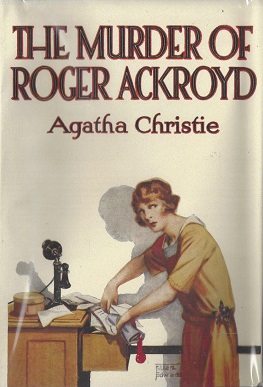
The Murder of Roger Ackroyd is a detective novel by the British writer Agatha Christie, her third to feature Hercule Poirot as the lead detective. The novel was published in the UK in June 1926 by William Collins, Sons, having previously been serialised as Who Killed Ackroyd? between July and September 1925 in the London Evening News. An American edition by Dodd, Mead and Company followed in 1926.

Nicholas Nickleby, or The Life and Adventures of Nicholas Nickleby, is the third novel by Charles Dickens, originally published as a serial from 1838 to 1839. The character of Nickleby is a young man who must support his mother and sister after his father dies.

Dombey and Son is a novel by English author Charles Dickens. It follows the fortunes of a shipping firm owner, who is frustrated at the lack of a son to follow him in his footsteps; he initially rejects his daughter's love before eventually becoming reconciled with her before his death.

Elephants Can Remember is a work of detective fiction by British writer Agatha Christie, first published in 1972. It features her Belgian detective Hercule Poirot and the recurring character Ariadne Oliver. This was the last novel to feature either character, although it was succeeded by Curtain: Poirot's Last Case, which had been written in the early 1940s but was published last. Elephants Can Remember concentrates on memory and oral testimony.
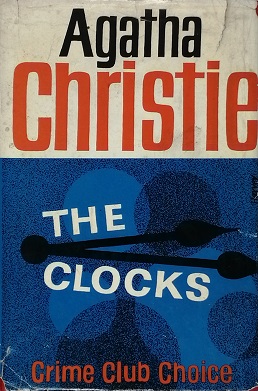
The Clocks is a work of detective fiction by British writer Agatha Christie, first published in the UK by the Collins Crime Club on 7 November 1963 and in the US by Dodd, Mead and Company the following year. It features the Belgian detective Hercule Poirot. The UK edition retailed at sixteen shillings (16/-) and the US edition at $4.50.

Confessions of an Ugly Stepsister is a 1999 fantasy novel by American writer Gregory Maguire, retelling the tale of Cinderella through the eyes of one of her "ugly stepsisters." In 2002, the book was adapted into a TV movie of the same name directed by Gavin Millar.
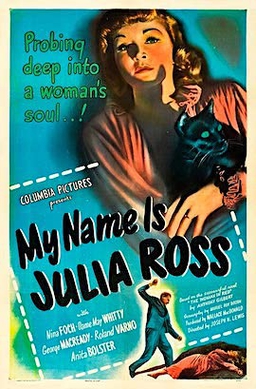
My Name Is Julia Ross is a 1945 American film noir thriller directed by Joseph H. Lewis, and starring Nina Foch, Dame May Whitty, and George Macready. Its plot follows a young woman in England who is hired as a live-in secretary for an ailing widow, where she awakens one day and is gaslit by those around her, claiming she is someone else. The screenplay is based on the 1941 novel The Woman in Red by Anthony Gilbert. The film received a loose remake called Dead of Winter (1987), starring Mary Steenburgen.

A Girl of the Limberlost, a novel by American writer and naturalist Gene Stratton-Porter, was published in August 1909. It is considered a classic of Indiana literature. It is the sequel to her earlier novel Freckles.

The Woman in White is Wilkie Collins's fifth published novel, written in 1860 and set from 1849 to 1850. It started its publication on 26 November 1859 and its publication was completed on 25 August 1860. It is a mystery novel and falls under the genre of "sensation novels".

Night and Day is a novel by Virginia Woolf first published on 20 October 1919. Set in Edwardian London, Night and Day contrasts the daily lives and romantic attachments of two acquaintances, Katharine Hilbery and Mary Datchet. The novel examines the relationships between love, marriage, happiness, and success.
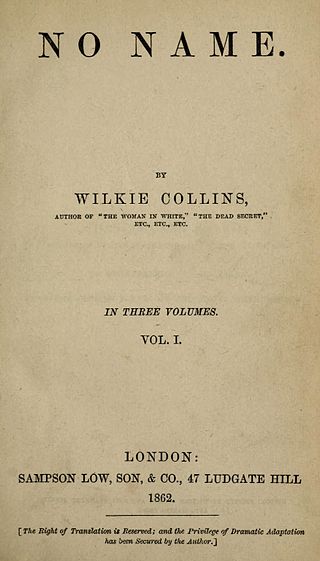
No Name is a novel by Wilkie Collins, first published in 1862. Illegitimacy is a major theme of the novel. It was originally serialised in Charles Dickens' magazine All the Year Round before book publication.
This is a list of fictional stories in which illegitimacy features as an important plot element. Passing mentions are omitted from this article. Many of these stories explore the social pain and exclusion felt by illegitimate "natural children".

The Nether World (1889) is a novel written by the English author George Gissing. The plot concerns several poor families living in the slums of 19th-century London. Rich in naturalistic detail, the novel concentrates on the individual problems and hardships which result from the typical shortages experienced by the lower classes—want of money, employment and decent living conditions. The Nether World is pessimistic and concerns exclusively the lives of poor people: there is no juxtaposition with the world of the rich.

Celestina is an eighteenth-century English novel and poet Charlotte Smith’s third novel. Published in 1791 by Thomas Cadell, the novel tells the story of an adopted orphan who discovers the secret of her parentage and marries the man she loves. It is a courtship novel that follows the typical Cinderella plot while still commenting on contemporary political issues.
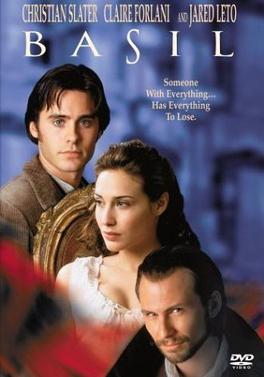
Basil is a 1998 British historical drama film directed by Radha Bharadwaj and starring Christian Slater, Jared Leto, Claire Forlani and Derek Jacobi. It was based on the 1852 novel Basil by Victorian author Wilkie Collins. The adaptation is by Bharadwaj.
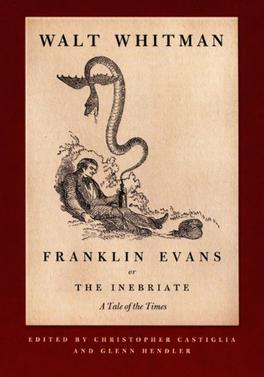
Franklin Evans; or The Inebriate, is a temperance novel by Walt Whitman first published in 1842.

La dama velata is a 2015 Italian-Spanish mysterydrama television miniseries directed by Carmine Elia. It was produced by Rai Fiction, Lux Vide and Telecinco Cinema, with a budget of about 10 million euros. It is set in Trentino, in the late nineteenth century. In Italy, the series was broadcast on Rai 1 and Rai 1 HD from March 17 to April 16, 2015.

A Study in Scarlet Women is a mystery by Sherry Thomas. It is the first novel of Thomas' "Lady Sherlock series". In the novel, Thomas gender-flips Sherlock Holmes into Charlotte Holmes. Thomas said
"A Sherlock Holmes has the luxury of not thinking about such rules. After all, they don't interfere in his life...Charlotte Holmes has no choice but to deal with them—and how she deals with them would define the paths of her life."
